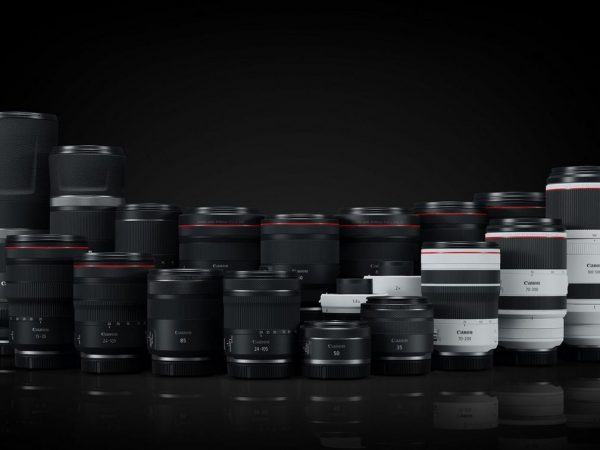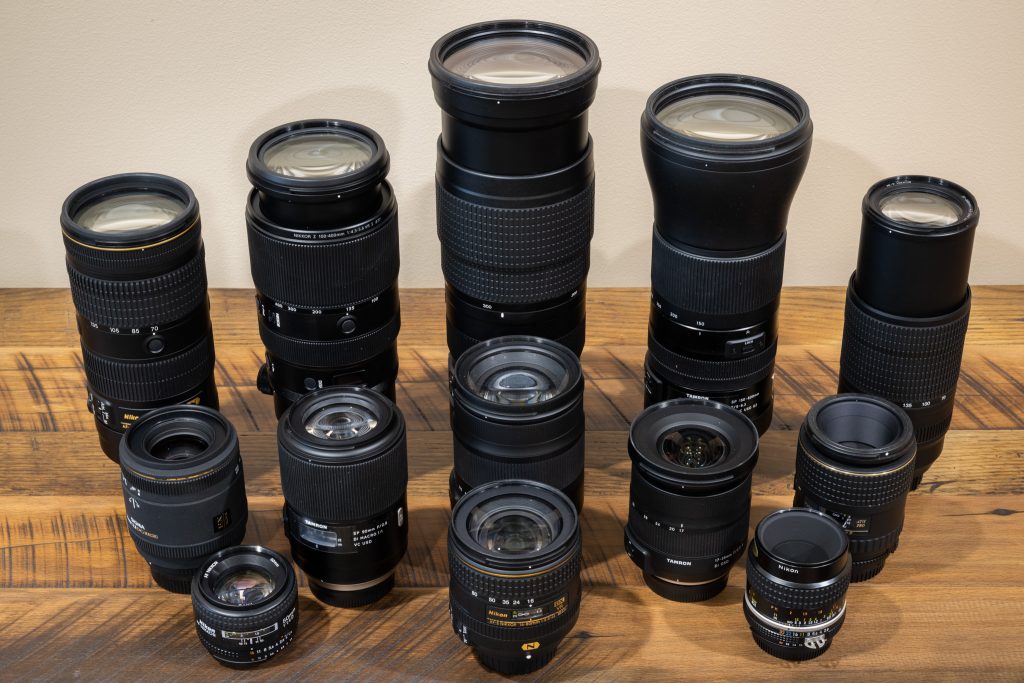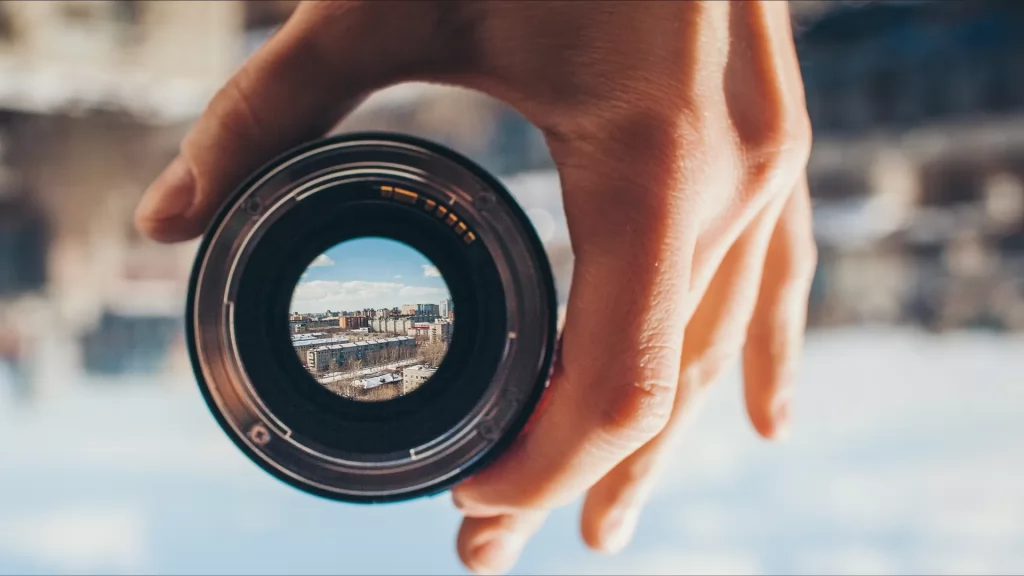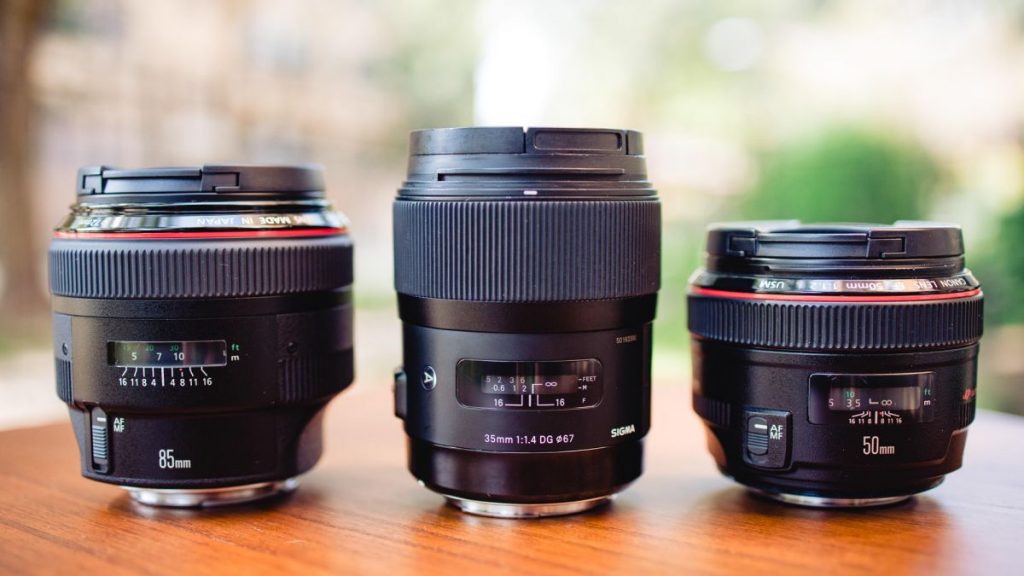07
Jul

A camera is of no use without a lens, even though some cameras come with this feature built-in. After all, it’s one of the most important parts of any digital camera, given its major role in the image-forming process. If you want to use your camera’s capabilities to the fullest and capture amazing images, you need to know how to pick the right lens.
There are several factors you need to take into account when looking into different types of camera lenses. Each one is designed for a specific purpose, and some might be better suited for the type of photography you’re interested in than others.
When the subject is in focus, the focal length is the distance (in millimetres) between the centre of the lens to the sensor. The broader the shot, the lower the number. The greater the number, the greater the zoom. If you’d like to fit more into your frame, consider wide-angle focal lengths like as 14mm, 20mm, 24mm, 28mm, and 35mm.
If you choose to get as near to your subject as possible, opt for a telephoto lens with a focal length that typically ranges from 50mm to 100mm. Just make sure it has an f2.8 aperture because then sufficient light may come through.

In most situations, choosing the proper focal length is related to the type of content you want to capture. Different lenses are useful for different applications. Landscape photography favours wide-angle camera lenses with focal lengths ranging from 14mm to 35mm. Wide-angle lenses are also superior for architecture photography.
Portrait photographers should use lenses with focal lengths ranging from 45mm to 85mm. The dimensions of the face and torso are true to life and pleasing at this distance.
In most situations, animal and nature photography necessitates long focal lengths ranging from 300mm to 600mm. You can obtain beautiful, tight images of birdlife with such focus lengths without scaring them away.
The aperture is the amount of light that can penetrate your sensor. It is indicated by the character f and matching numerals, which are referred to as an f-stop. A lower aperture value, such as f1.2, indicates that the opening is larger, allowing more light to enter the lens and making it ideal for low-light photography.

Professional photographers typically purchase wide-aperture lenses with maximum apertures of f/1.4, f/1.8, or f/2. You may photograph in any setting, regardless of the surrounding light, with these wide apertures. That is why they are among the greatest lenses available.
One drawback is that the larger the maximum aperture of your lens, the more expensive it will be. Most novice shooters could get away with lenses with f/4 or f/5.6 apertures. These lenses don’t have the same field depth or bokeh (the pleasant out-of-focus areas in an image) as the more costly f/1.8 or f/2 lenses, but they’re a great alternative for budget-conscious photographers.
When you’re ready to buy a camera lens, the first thing you need to do is determine which mount type your camera has. You can check your camera’s manual or look up the specifications online. Once you know the mount type, finding a compatible lens will be a breeze.
Since most sensors are between 22mm and 24mm, full-frame cameras have a field of view that is similar to what the human eye perceives. As a result, these cameras are used primarily by professionals. The lenses for full-frame cameras are also more expensive than those designed for APS-C sensors.
APS-C sensors are smaller, usually between 16mm and 24mm. This sensor size is found primarily in entry-level and mid-range DSLRs.
If you have a Micro Four Thirds (MFT) sensor, your camera is mirrorless. These sensors are the smallest on the market, measuring just 17.3mm x 13mm. MFT cameras are popular among vloggers and travel photographers because of their compact size.
There are two main categories of lenses, zoom lenses and prime lenses, each with its own set of subcategories.
As the name implies, zoom lenses allow you to zoom in and out without losing image quality. This is accomplished by moving the lens elements closer together or further apart. Zoom lenses are available in a wide range of focal lengths, from wide-angle to telephoto.
The most common types of zoom lenses include standard, wide-angle and telephoto zoom lenses. Standard models have a field of view similar to the human eye and are ideal for everyday photography. Wide-angle zoom lenses have a field of view that is wider than the standard lenses, making them perfect for landscape and architecture photography. Telephoto lenses have a narrow field of view, making them ideal for sports and wildlife photography.

Unlike zoom models, prime lenses have a fixed focal length. This means that you cannot zoom in or out without losing image quality. The benefit of these kinds of lenses is that they typically have a wider aperture than zoom lenses, making them ideal for low-light photography. Their compact size and lower price tag make them a popular choice among beginner photographers.
Photographers differ on which picture lens is better for a particular setting, but it all comes down to personal choice. The best approach to select the appropriate lens for you would be to try them on for comparison. Check out which feels right for your goals and the atmosphere or impact you want to produce in your images. Finding the correct digital photography equipment is a process of trial and error.